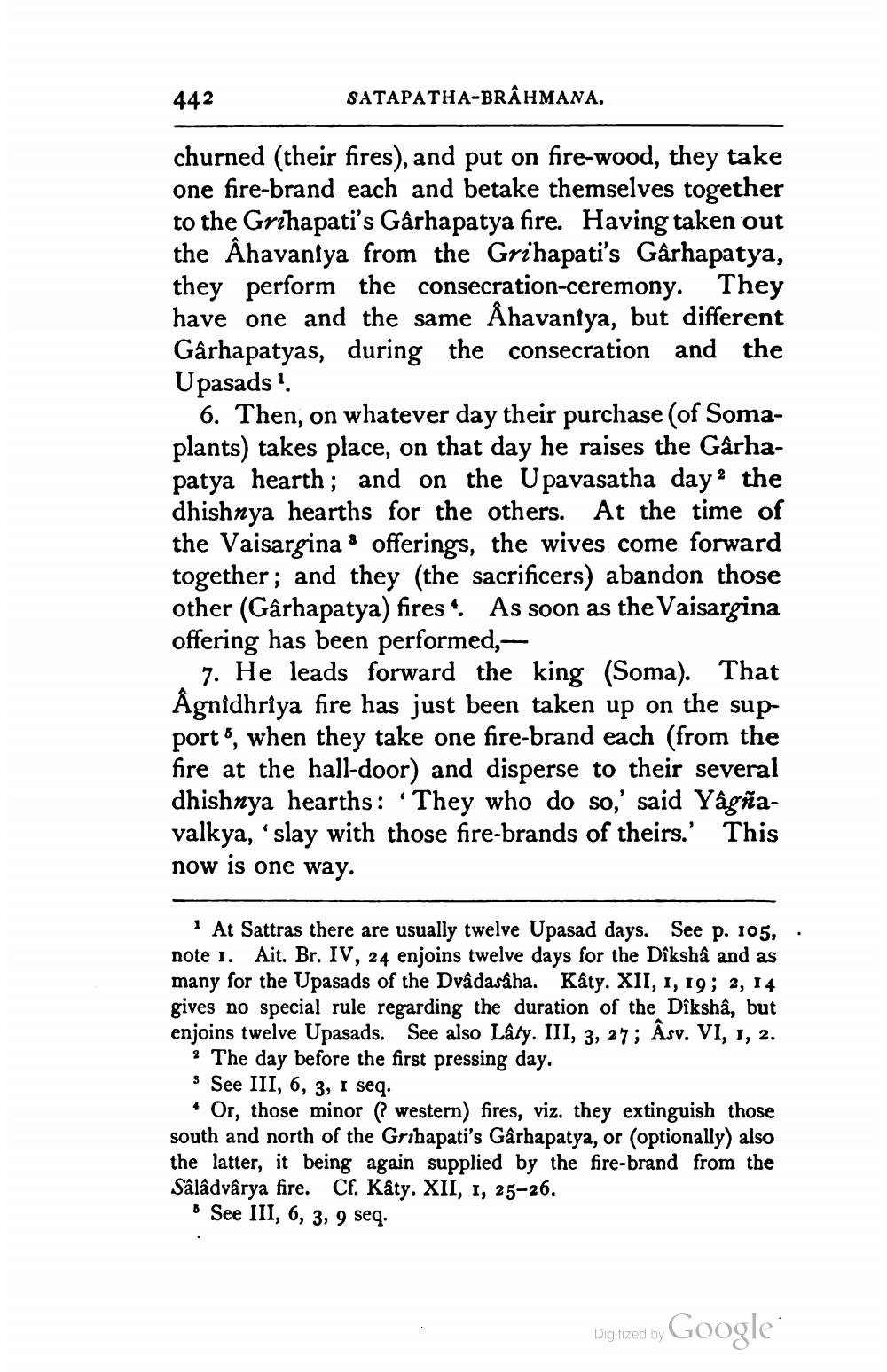________________
442
SATAPATHA-BRAHMANA.
churned (their fires), and put on fire-wood, they take one fire-brand each and betake themselves together to the Grihapati's Gârhapatya fire. Having taken out the Ahavaniya from the Grihapati's Garhapatya, they perform the consecration-ceremony. They have one and the same Åhavaniya, but different Gârhapatyas, during the consecration and the Upasads?
6. Then, on whatever day their purchase (of Somaplants) takes place, on that day he raises the Gårhapatya hearth; and on the Upavasatha day 2 the dhishnya hearths for the others. At the time of the Vaisargina 8 offerings, the wives come forward together; and they (the sacrificers) abandon those other (Gârhapatya) fires". As soon as the Vaisargina offering has been performed,
7. He leads forward the king (Soma). That Ågnidhriya fire has just been taken up on the support", when they take one fire-brand each (from the fire at the hall-door) and disperse to their several dhishnya hearths: “They who do so,' said Yagñavalkya, 'slay with those fire-brands of theirs.' This now is one way.
* At Sattras there are usually twelve Upasad days. See p. 105, note 1. Ait. Br. IV, 24 enjoins twelve days for the Diksha and as many for the Upasads of the Dvadasaha. Kâty. XII, 1, 19; 2, 14 gives no special rule regarding the duration of the Dîkshâ, but enjoins twelve Upasads. See also Lâty. III, 3, 27; Âsv. VI, 1, 2.
2 The day before the first pressing day. s See III, 6, 3, I seq.
4 Or, those minor (? western) fires, viz. they extinguish those south and north of the Grihapati's Gârhapatya, or (optionally) also the latter, it being again supplied by the fire-brand from the Sâlâdvârya fire. Cf. Kâty. XII, 1, 25-26.
• See III, 6, 3, 9 seq.
Digitized by Google




